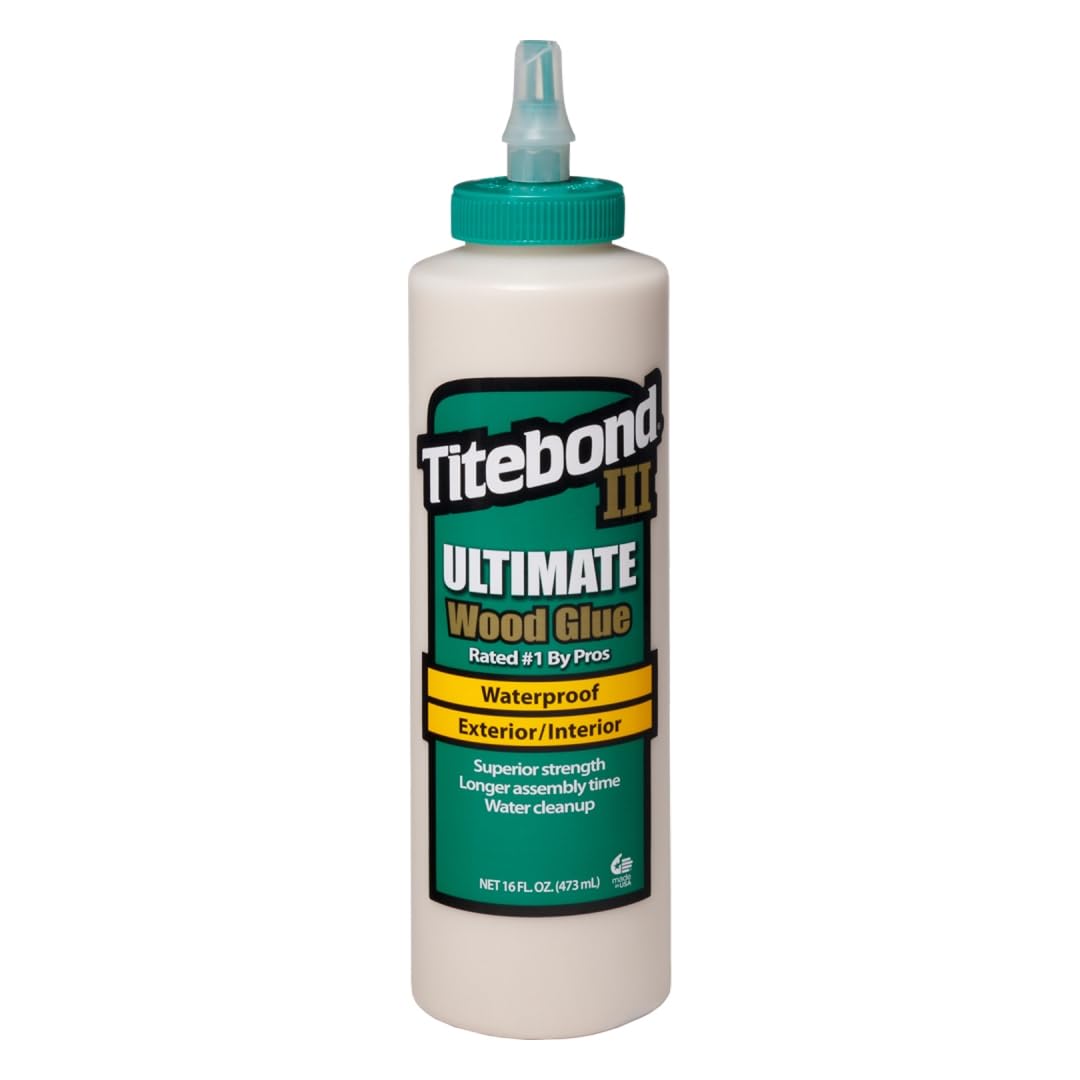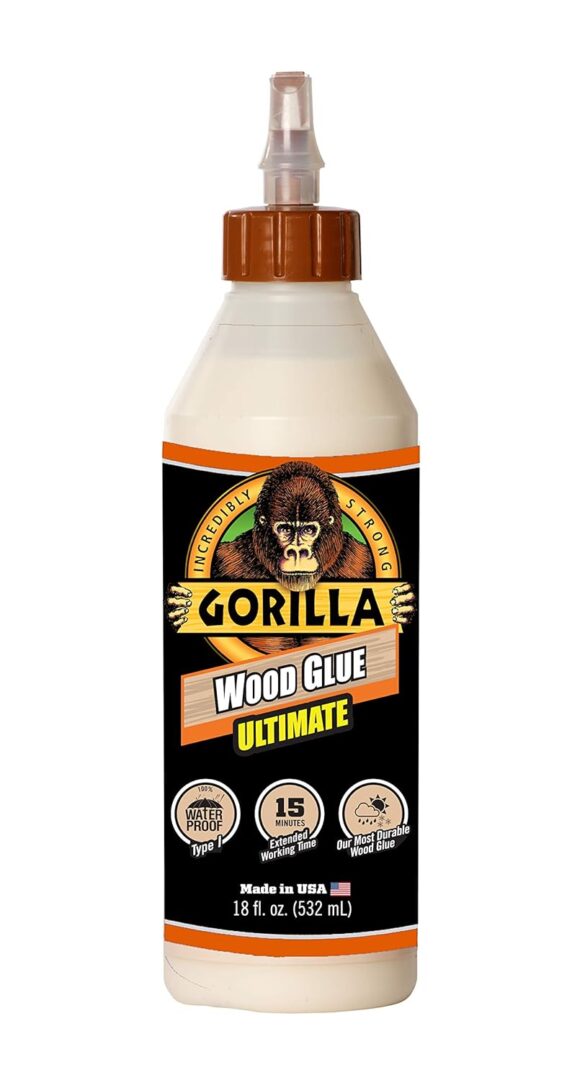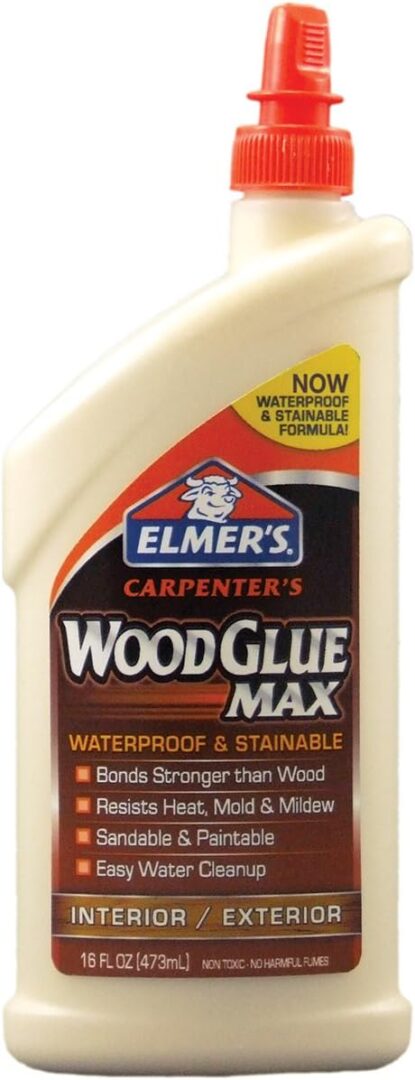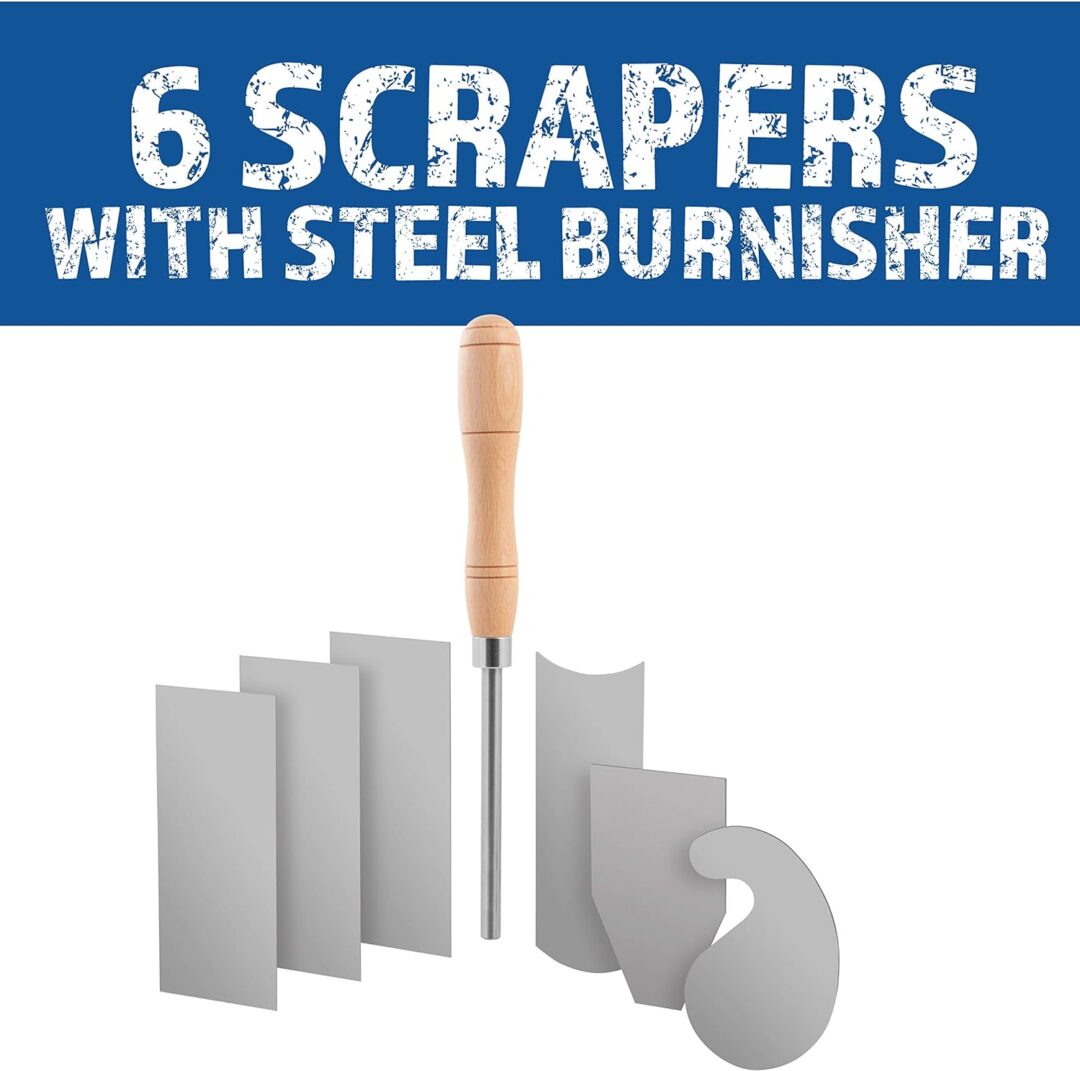Estimated reading time: 5 minutes
As a cabinet maker and home builder, I’ve used various glues. In this post, I’ll share my experience with different types of wood glue and help you choose the right one for your project.
Types of Wood Glue
There are three main types of wood glue:
- White PVA (Polyvinyl Acetate) Glue is the most common type of wood glue. It is affordable, easy to use, and dries clear. However, it is not water-resistant.
- Yellow Carpenter’s Glue (Aliphatic Resin): This glue is stronger and more water-resistant than white PVA glue. It is also slightly more expensive.
- Polyurethane Glue: This glue is the strongest and most water-resistant of the three types. It is also the most expensive.

Choosing the Right Glue
The best type of wood glue for your project will depend on several factors, including:
1. The Type of Wood You Are Using
Wood comes in various species and densities, and some glues perform better with certain types of wood than others.
- Hardwoods: For dense hardwoods such as oak and maple, you’ll need a penetrating glue that forms a strong bond.
- Softwoods: A quick-set glue is beneficial for less dense wood like pine and cedar.
- Exotic woods: Are you working with woods with oily surfaces? Those may repel standard wood glues, requiring a specialized adhesive.
My recommended brand for all wood types is Titebond III Ultimate Wood Glue.
Titebond III is the first one-part, water-cleanup wood glue ever offered that is proven waterproof. But don’t take my word for it. The waterproof formula passes the ANSI/HPVA Type I water-resistance specification and offers superior bond strength, longer open assembly time, and lower application temperature.
Titebond III is non-toxic and solvent-free, and it cleans up with water. It’s safer to use than traditional waterproof wood glues. It provides strong initial tack, sands easily without softening, and is FDA approved for indirect food contact (cutting boards). It is the ultimate in wood glues, ideal for both interior and exterior applications. It’s versatile and performs well with hardwoods and softwoods, offering a strong bond. To get it delivered to your doorstep, click this link: Titebond III Ultimate Wood Glue
Glue Cleanup
There are a few techniques and tricks to avoiding and dealing with glue squeeze-out. Bob Behnke from Titebond and Chris Fitch of The Woodsmith Shop discuss this common challenge.
Bonus Tip: Here’s how to get super glue off your hands.
2. The Strength of the Bond You Need
The strength of the glue bond is crucial, especially for joints that will bear weight or stress.
A strong, durable bond is essential when working with furniture, but bond strength can be slightly less critical when working with decorative items.
I recommend Gorilla Wood Glue, as it covers both options. It’s known for exceptional bonding strength, making it ideal for furniture and other weight-bearing applications.
3. The Water Resistance You Need
Depending on whether your project will be indoors or outdoors, water resistance can be a significant factor.
- Indoor projects: Water resistance might not be a major concern.
- Outdoor projects: High water resistance is essential to prevent the glue from breaking down.
My go-to for water-resistant glue is Elmer’s Carpenter’s Wood Glue Max. It offers excellent moisture resistance, making it suitable for indoor and outdoor projects.
4. The Flexibility You Need
Some projects require the glue to remain flexible to accommodate wood movement due to temperature and humidity changes.
Dap is a great product that helps prevent cracking and maintain joint integrity. It works great on ridge surfaces and joints.
I recommend Dap Weldwood Plastic Resin Glue. It balances strength and flexibility and is suitable for various woodworking projects.
Application Tips
Here’s a list of my application tips when choosing the right glue:
- It’s always important to read the product label carefully.
- Always store glue in a cool, dry place.
- If you have the time, test the glue on a scrap piece of wood.
- Use a glue spreader to apply the glue evenly for the best coverage.
- Allow the glue to dry completely before sanding or painting.
- Clean-up! Address your spills and “ooze-outs” immediately. I recommend a Fulton Cabinet Scraper for tough clean-up jobs. Watch this short video on burnishing a card scraper.
I hope this post helped you learn more about wood glue. You can create strong bonds that last for years with the right glue and technique.
One last thought: wearing safety glasses and gloves when working with glue is essential. Stay safe!





- - - - - - - - - - - - - - - - - - - - -